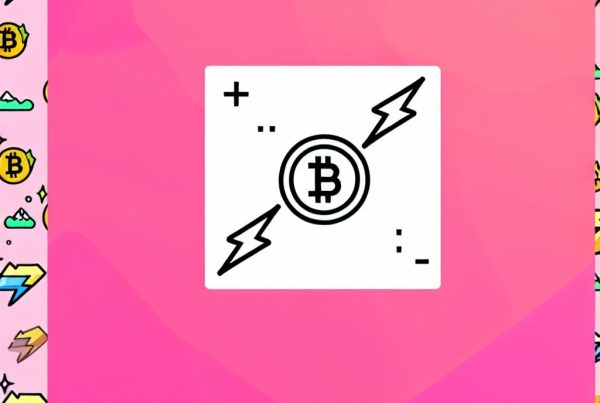How to Identify Rug Pulls and Honeypots in Cryptocurrency
The cryptocurrency market has seen explosive growth, attracting both seasoned investors and newcomers. However, this rapid expansion has also led to an increase in fraudulent schemes, particularly rug pulls and honeypots. Understanding how to identify these scams is crucial for anyone looking to invest in cryptocurrencies. This comprehensive guide will delve into the characteristics of rug pulls and honeypots, how to spot them, and strategies to protect your investments.
What are Rug Pulls?
A rug pull is a type of scam in the cryptocurrency space where developers abandon a project and take off with investors’ funds. This typically occurs in decentralized finance (DeFi) projects, where liquidity is provided by users. When a rug pull happens, the developers withdraw all the liquidity, leaving investors with worthless tokens.
Characteristics of Rug Pulls
Identifying a rug pull can be challenging, but certain characteristics can serve as red flags:
- Anonymous Developers: If the team behind a project is anonymous or has no verifiable history, it’s a significant warning sign.
- High Promises: Projects that promise unrealistic returns or quick profits often have ulterior motives.
- Low Liquidity: If a project has low liquidity, it may be easier for developers to execute a rug pull.
- Unverified Contracts: Smart contracts that haven’t been audited or verified can be manipulated by developers.
- Social Media Hype: Overly aggressive marketing on social media platforms can indicate a lack of substance behind the project.
What are Honeypots?
A honeypot is another type of scam where a smart contract is designed to attract investors but prevents them from selling their tokens. In this scenario, investors can buy tokens but cannot sell them, effectively trapping their funds.
Characteristics of Honeypots
Honeypots can be particularly deceptive. Here are some signs to look out for:
- Buy-Only Functionality: If a contract allows buying but restricts selling, it’s likely a honeypot.
- Complex Code: Honeypots often have complicated smart contracts that are difficult to understand.
- High Transaction Fees: Excessive fees for selling can deter investors from liquidating their positions.
- Limited Information: Lack of transparency regarding the project’s goals and team can indicate a honeypot.
How to Spot Rug Pulls and Honeypots
Identifying rug pulls and honeypots requires a combination of research, analysis, and intuition. Here are some effective strategies:

1. Conduct Thorough Research
Before investing in any cryptocurrency project, conduct extensive research. Look for:
- Team Background: Investigate the developers’ history and previous projects.
- Community Feedback: Check forums and social media for community sentiment.
- Project Roadmap: A clear and realistic roadmap can indicate a legitimate project.
2. Analyze Smart Contracts
Understanding the smart contract is crucial. Use tools like BscScan or Etherscan to review the contract code. Look for:
- Sell Restrictions: Check if there are any functions that prevent selling.
- Liquidity Locks: Ensure that liquidity is locked for a reasonable period.
- Audit Reports: Look for third-party audits that verify the contract’s integrity.
3. Use Analytical Tools
Several analytical tools can help you assess the risk of a project:
- Token Sniffer: This tool analyzes tokens for potential scams.
- Rug Check: A platform that provides insights into the legitimacy of a project.
- DeFi Safety: Offers safety ratings for DeFi projects based on various criteria.
4. Monitor Social Media and Community Engagement
Active community engagement is often a sign of a legitimate project. Monitor:
- Telegram Groups: Engage with the community and ask questions.
- Twitter Activity: Check for regular updates and interactions from the team.
- Reddit Discussions: Look for discussions about the project on relevant subreddits.
Real-World Examples of Rug Pulls and Honeypots
Understanding real-world cases can provide valuable insights into how these scams operate. Here are notable examples:
1. BitConnect
BitConnect was one of the most infamous rug pulls in cryptocurrency history. It promised high returns through a lending program but ultimately collapsed, leaving investors with significant losses. The project’s lack of transparency and reliance on new investors to pay returns were key indicators of its fraudulent nature.
2. SafeMoon
While SafeMoon gained immense popularity, it faced scrutiny over its tokenomics and the potential for a rug pull. Critics pointed out the lack of liquidity and the anonymous nature of its developers as red flags. Although it has not been definitively labeled a rug pull, the concerns raised highlight the importance of due diligence.
3. Meerkat Finance
Meerkat Finance was a DeFi project that executed a rug pull shortly after launching. Developers drained $31 million from the liquidity pool, leaving investors with worthless tokens. This incident underscored the risks associated with new DeFi projects and the need for thorough research.
Statistics on Rug Pulls and Honeypots
The prevalence of rug pulls and honeypots is alarming. According to a report by Chainalysis, rug pulls accounted for over $2.8 billion in losses in 2021 alone. The number of scams has only increased as more investors enter the market, making it essential to stay informed and vigilant.
Protecting Your Investments
While it’s impossible to eliminate all risks in cryptocurrency investing, there are steps you can take to protect your investments:
- Diversify Your Portfolio: Don’t put all your funds into one project. Spread your investments across multiple assets.
- Invest in Established Projects: Focus on projects with a proven track record and a strong community.
- Stay Informed: Follow trusted news sources like Bitrabo for updates on market trends and potential scams.
- Use Hardware Wallets: Store your cryptocurrencies in hardware wallets for added security.
FAQs
What is the difference between a rug pull and a honeypot?
A rug pull involves developers abandoning a project and taking off with investors’ funds, while a honeypot allows investors to buy tokens but prevents them from selling, effectively trapping their funds.
How can I report a suspected rug pull or honeypot?
You can report suspected scams to platforms like Binance or Coinbase, as well as to local authorities if necessary.
Are there any tools to help identify scams?
Yes, tools like Token Sniffer, Rug Check, and DeFi Safety can help analyze projects for potential scams.
Can I recover funds lost in a rug pull or honeypot?
Recovering funds lost in scams is often difficult, but you can report the incident to authorities and seek legal advice.
Conclusion
Identifying rug pulls and honeypots is essential for anyone involved in the cryptocurrency market. By understanding the characteristics of these scams and employing effective strategies to spot them, you can protect your investments and make informed decisions. Always conduct thorough research, utilize analytical tools, and stay engaged with the community. For the latest updates and insights into the cryptocurrency world, consider following trusted sources like Bitrabo. Stay safe and informed in your crypto journey!
Disclaimer: This article is for informational purposes only and should not be considered financial advice. Always do your own research before investing in cryptocurrencies.
For more insights, follow me on X, Instagram, and Threads.
The Crypto Watchlist of the Week 🔎
Subscribe to receive expert-curated projects with real potential—plus trends, risks, and insights that matter. Get handpicked crypto projects, deep analysis & market updates delivered to you.


